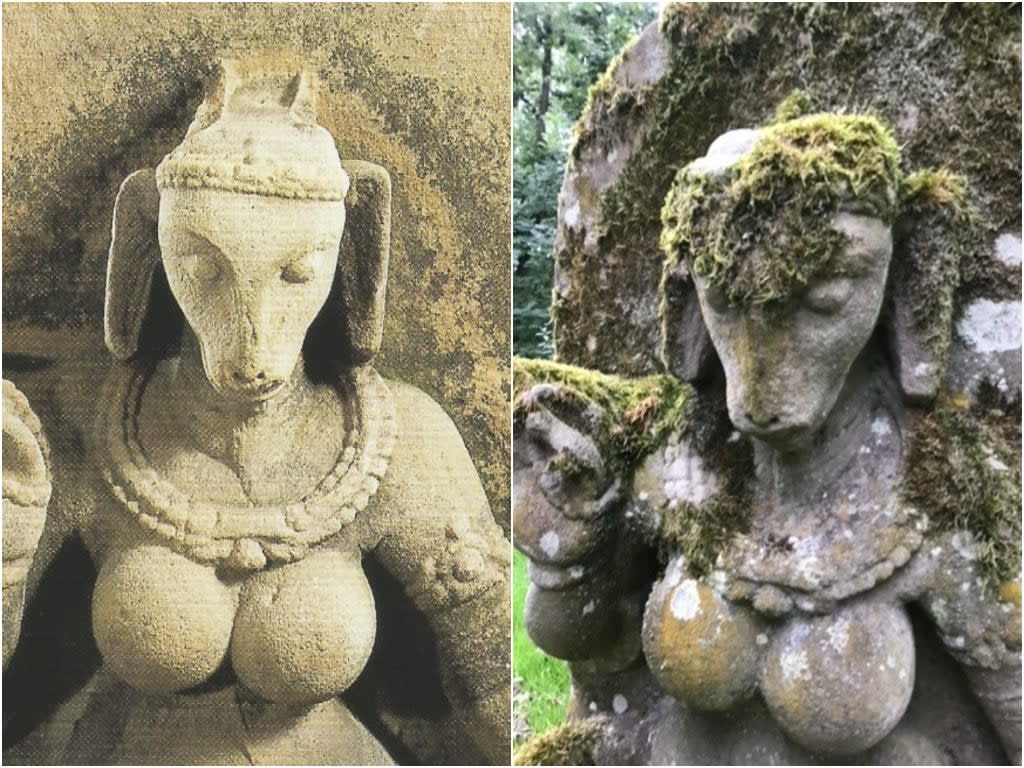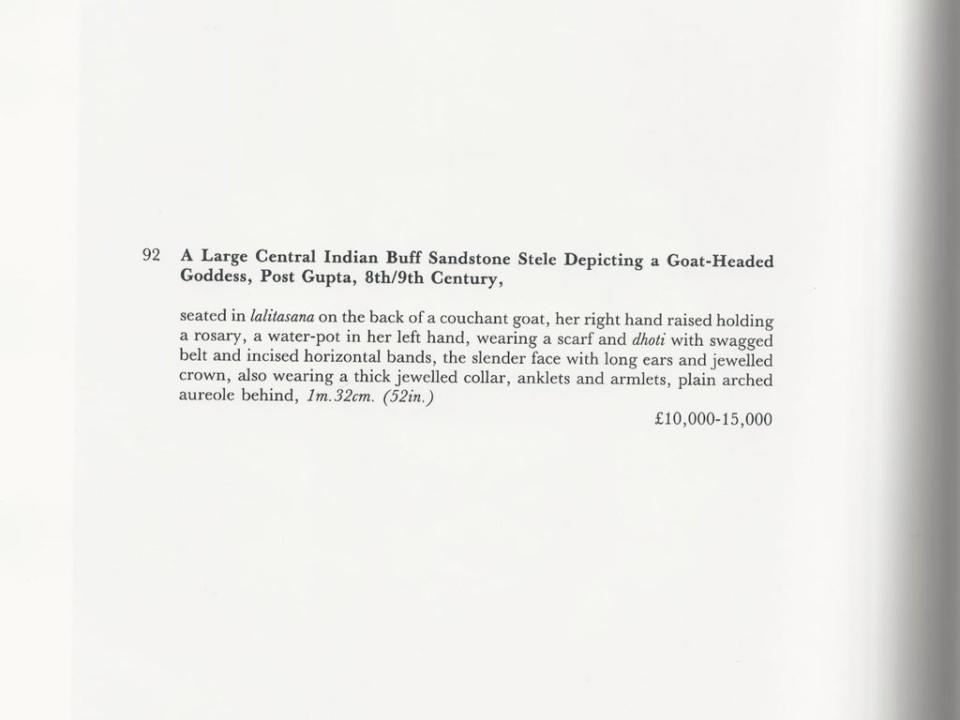‘A very rare icon’: Statue of Hindu goddess that was almost auctioned in London to be returned to India

An ancient statue of a Hindu goddess that was stolen from India nearly four decades ago is finally being returned to the country.
The statue of the goat-headed yogini was recovered in London in October 2021 and was almost auctioned off by Sotheby’s, according to a CNN report published on Monday.
Experts said it was listed with an auction value of up to Rs 1.4m (£15,000) in a catalogue from 1988 but later “pulled from sale”.
“It was never investigated,” said Vijay Kumar, the co-founder of the India Pride Project, an initiative by art enthusiasts who say they want to track India’s stolen heritage.
“This episode relates to something that allegedly occurred almost a quarter of a century ago. Sotheby’s adheres to the highest standards in the industry, supported by a world-class compliance team, who work closely with outside authorities to ensure that we operate to the highest level of business integrity,” Sotheby’s told CNN.

The prized statue was first rediscovered by Christopher Marinello, a lawyer whose company, Art Recovery International, specialises in tracking and recovering missing works of art.
Mr Marinello told the broadcaster he first came across the yogini figure when an unnamed widow in the UK approached him to sell the contents of her home – including the statue.
He added that the item “raised a red flag” and that the widow had “no idea” it was stolen.
When the lawyer contacted Mr Kumar to establish the statue’s lineage, he confirmed it had indeed been stolen from India.
Mr Kumar, whose nonprofit initiative raises awareness about looted cultural objects, told CNN that the statue was a part of a larger collection of yogini figures that were taken from a village in Uttar Pradesh between 1978 and 1982.
He added that the statue of the goat-headed goddess is a “very rare icon”.
With the assistance of the High Commission of India, the Archaeological Survey of India, the country’s Directorate of Revenue Intelligence and the London Metropolitan Police, Mr Kumar and Mr Marinello began the process of repatriating the statue to India.
“We are now in the last leg for restitution and soon the yogini would be handed over to High Commission of India in London and then sent to its rightful place in India,” according to Mr Jaspreet Singh Sukhija, the first secretary for trade at India’s High Commission in London.
Read More
How the drugs case of Shah Rukh Khan’s son was a warning to Bollywood
Decision to move Banksy mural from Welsh town to England sparks row
Christopher Walken paints over original Banksy artwork in The Outlaws finale
Decision to move Banksy mural from Welsh town to England sparks row
Christopher Walken paints over original Banksy artwork in The Outlaws finale
Artist turns in blank canvases after being given $84,000 for museum artwork


